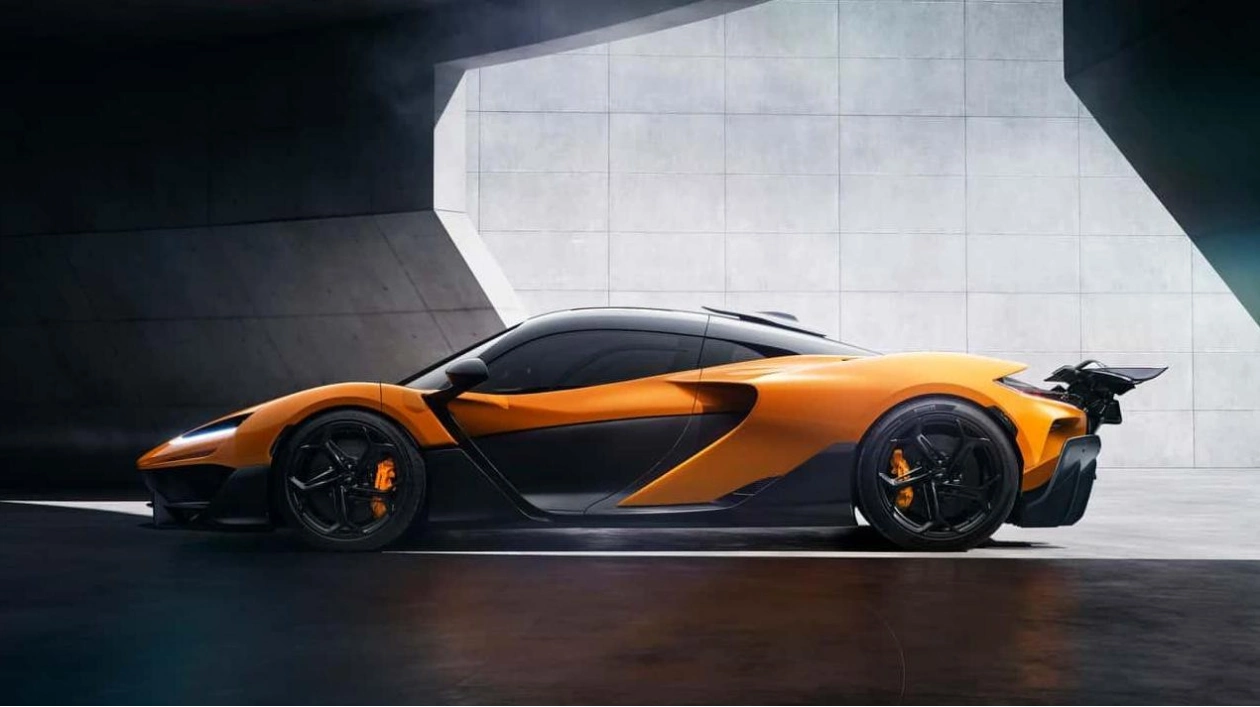Over a decade after the P1 captivated the automotive world, McLaren has introduced its latest hypercar, the W1. Similar to its predecessor, the W1 is a rear-wheel drive hybrid featuring a mid-mounted V-8 engine. However, this barely scratches the surface of its capabilities. This hypercar is significantly more advanced in every aspect. Here’s what makes it truly remarkable.
A significant portion of the W1’s design revolves around aerodynamics, a characteristic expected from a manufacturer linked to a Formula 1 team. McLaren claims a maximum downforce of 2,205 pounds at 174 mph, which is comparable to the Aston Martin Valkyrie’s 2,425 pounds and surpasses the McLaren Senna’s 1,800 pounds. The Valkyrie serves as a relevant comparison as it heavily relies on underbody, “ground effect” aerodynamics, unlike traditional over-body appendages, maximizing downforce without excessive drag.
Active aerodynamic systems enable the W1 to achieve a top speed of 217 mph, identical to the P1’s, despite generating significantly more downforce. The front wing is adjustable, moving in an arc to increase or decrease downforce on the front axle as required. The rear features an “Active Long Tail” wing, inspired by the 1997 F1 GTR race car, which can extend by nearly a foot to enhance the underbody diffuser’s efficiency.
The diffuser, starting just behind the cabin and in front of the rear axle, curves upwards and acts as a rear bumper, capable of withstanding significant impacts without additional structural support. The powertrain is angled downwards by 3 degrees to accommodate more diffuser channels. Other F1-inspired details include intakes shaped like undercut side pods and fixed seats, reducing frontal area, with the pedal box and steering wheel adjustable towards the driver.
The front suspension aids in downforce and brake cooling, utilizing double wishbones, pushrods, torsion-bar springs, and inboard dampers, similar to an F1 car. The wishbones and uprights are crafted from 3D-printed titanium, with the lower wishbones shaped like aerofoils to contribute to overall downforce. The W1 also features a heave damper, preventing excessive body lowering under load, and lacks a separate front subframe, with suspension components directly bolted to the carbon-fiber chassis.
The W1’s high-downforce design requires a stable aerodynamic platform, achieved through its suspension. It offers road and race settings, with the latter reducing ride height and significantly increasing spring rates and damping force. The rear suspension, while more conventional, benefits from wider, steeper diffuser channels, enhancing its effectiveness. McLaren’s “active drop-links” and Z-shaped anti-roll bar control heave without a front heave damper.
McLaren’s W1 debuts its second in-house engine design, a twin-turbocharged 4.0-liter V-8 producing 903 horsepower and 664 pound-feet of torque, with a 9,200-rpm redline. This engine uses finger followers for valve actuation, enabling higher-rpm performance, and features a fluid-damping system instead of a metal torsional damper.
Unlike other hybrid hypercars, the W1 exclusively powers the rear wheels via an eight-speed dual-clutch transmission. Its electric motor, mounted beside the gearbox, is powered by a 1.4-kilowatt-hour battery, contributing 342 hp and 324 lb-ft. Combined, the W1 delivers 1,241 hp and 988 lb-ft. The W1 has a limited all-electric range, but the electric motor handles reversing and provides engine boost based on drive mode.
The W1’s sun visors, made from carbon fiber and just 0.1 inches thick, highlight McLaren’s focus on weight reduction. With a dry weight of 3,048 pounds, the W1 is impressively light for a hybrid hypercar, significantly lighter than competitors like the Valkyrie and Mercedes-AMG One.
While much about the W1 remains undisclosed, it appears to integrate the best available technology, pushing the boundaries of hypercar performance. Despite a modest 300 hp increase over the P1, the W1 promises to be significantly faster, a feat that would have been unimaginable a decade ago.






